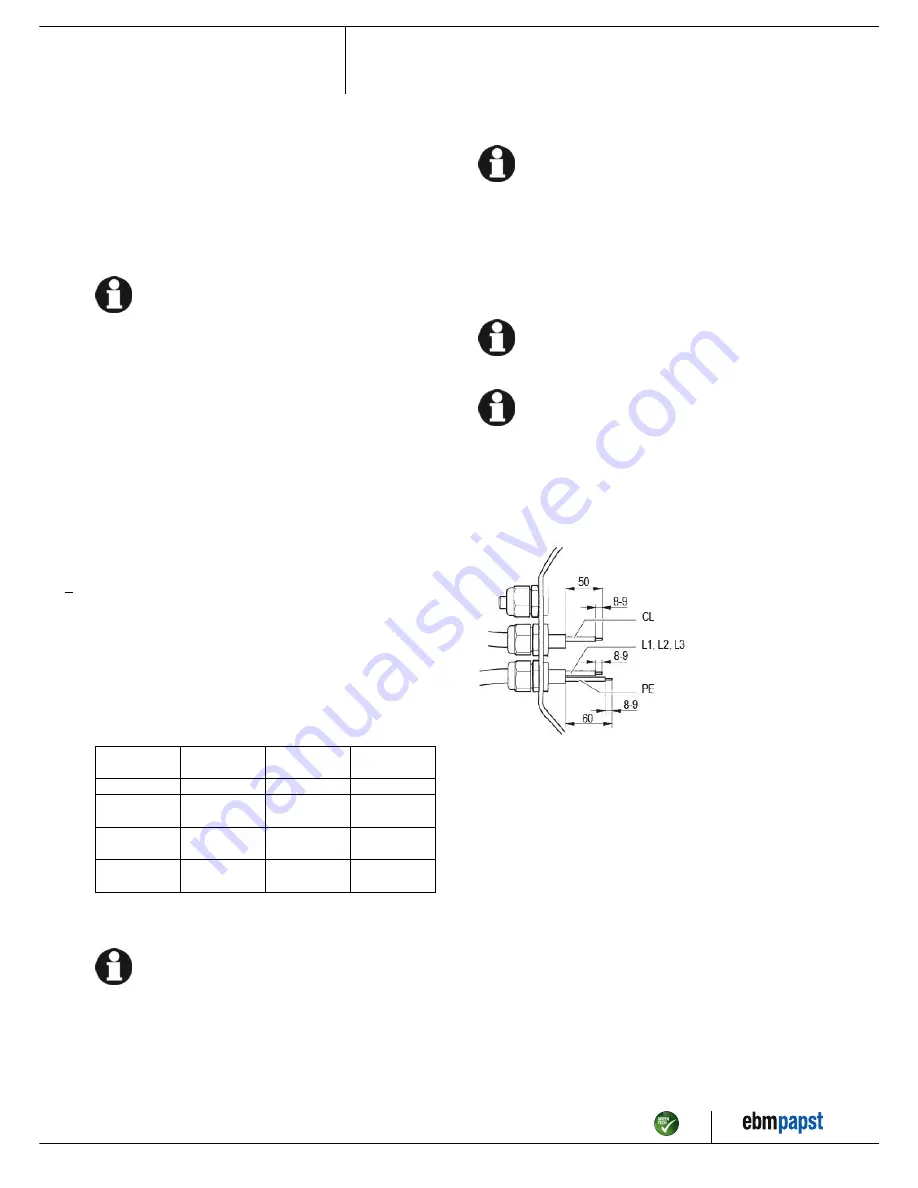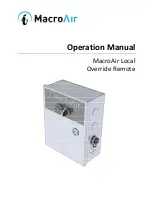
Operating instructions
W3G800-GV10-11
Translation of the original operating instructions
→ Ensure a sufficiently large clearance.
Recommendation: clearance > 10 cm (separate cable
routing)
NOTE
Water penetration into leads or wires
Water enters at the cable end on the customers side and can
damage the device.
→ Make sure that the cable end is connected in a dry
environment.
Connect the device only to circuits that can be switched off
using an all-pole disconnecting switch.
4.2.1 Prerequisites
;
Check whether the data on the type plate agree with the connection
data.
;
Before connecting the device, ensure that the supply voltage matches
the operating voltage of the device.
;
Only use cables designed for current according to the type plate.
For determining the cross-section, follow the basic principles in
accordance with EN 61800-5-1. The protective earth must have a
cross-section equal to or greater than the outer conductor cross-
section.
We recommend the use of 105°C cables. Ensure that the minimum
cable cross-section is at least
AWG26/0.13 mm².
Earth wire contact resistance to EN 61800-5-1
Compliance with the impedance specifications to EN 61800-5-1 for the
protective earth circuit must be verified in the end application.
Depending on the installation situation, it may be necessary to install an
additional protective earthing conductor via the additional protective earth
connection point available on the device.
The protective earth connection point is located on the housing and has
a protective earth symbol and a bore hole.
4.2.2 Power supply connection, fuse protection
Assignment of conductor cross-sections and the fuse protection required
for them (overload protection only, no device protection).
Nominal
voltage
Safety fuse
Wire cross-
section
Wire cross-
section
UL
mm²
AWG
3/PE AC 200-
240 VAC
15 A
1.5
16
3/PE AC 200-
240 VAC
20 A
2.5
14
3/PE AC 200-
240 VAC
30 A
4
12
* AWG = American Wire Gauge
4.2.3 Idle current
Because of the EMC filter integrated for compliance with EMC
limits (interference emission and interference immunity), idle
currents in the mains cable can be measured even when the
motor is at a standstill and the mains voltage is switched on.
●
The values lie in a range of typical < 250 mA.
●
The effective power in this operating state (readiness for operation) is
simultaneously at typical < 5 W.
4.2.4 Residual current operated device
Only universal (type B or B+) RCD protective devices are
permitted. Like frequency inverters, RCD protective devices
cannot provide personal safety while operating the device.
When switching on the power supply of the device, pulsed
charge currents from the capacitors in the integrated EMC filter
can lead to the RCD protective devices triggering without
delay. We recommend residual current devices with a trigger
threshold of 300 mA and delayed triggering (super-resistant,
characteristic K).
4.2.5 Leakage current
For asymmetrical power systems or if a phase fails, the
leakage current can increase to a multiple of the nominal value.
4.2.6 Locked-rotor protection
Due to the locked-rotor protection, the start-up current (LRA) is
equal to or less than the nominal current (FLA).
4.3 Connection in terminal box
4.3.1 Preparing connection lines for the connection
Strip the cable just enough so that the screwed cable gland is tight and
the terminals are relieved of strain. Tightening torque, see chapter 3.1
Product drawing.
Fig. 1: Recommended stripping lengths in mm (inside the terminal box)
Legend: CL = control lines
4.3.2 Connecting cables with terminals
WARNING
Terminals and connections have voltage even with a
unit that is shut off
Electric shock
→ Wait five minutes after disconnecting the voltage at all poles
before opening the device.
;
Remove the cap from the screwed cable gland.
Remove the cap only in those places where cables are inserted.
;
Mount the screwed cable glands with the seal inserts provided in the
terminal box.
;
Insert the line(s) (not included in the standard scope of delivery) into
the terminal box.
;
First connect the "PE" (protective earth) connection.
;
Connect the lines to the corresponding terminals.
Use a screwdriver to do so.
During the connection work, ensure that no cables splice off.
Item no. 50925-5-9970 · ENG · Revision 82270 · Release 2014-08-26 · Page 7 / 12
ebm-papst Mulfingen GmbH & Co. KG · Bachmühle 2 · D-74673 Mulfingen · Phone +49 (0) 7938 81-0 · Fax +49 (0) 7938 81-110 · [email protected] · www.ebmpapst.com






























